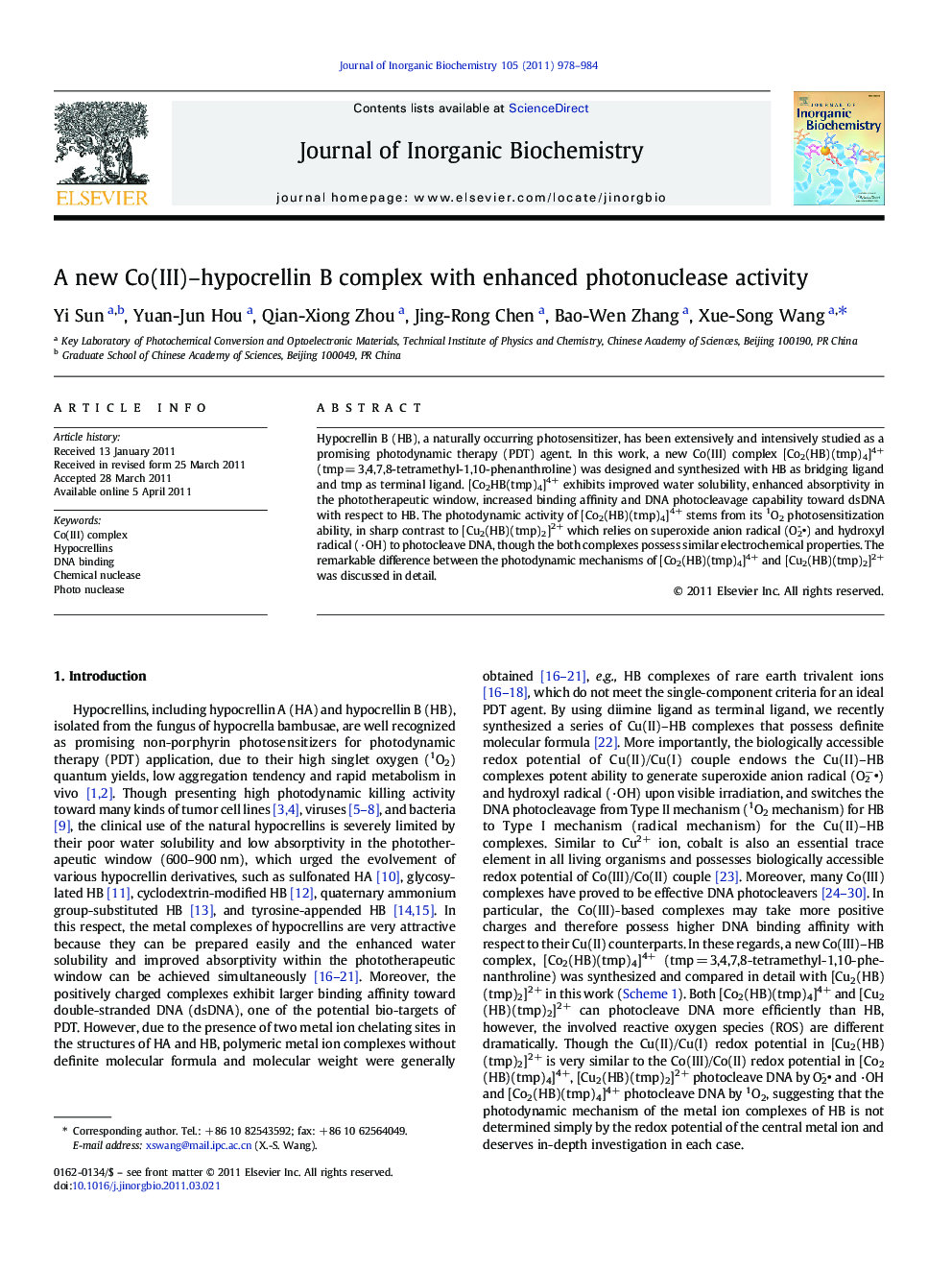| کد مقاله | کد نشریه | سال انتشار | مقاله انگلیسی | نسخه تمام متن |
|---|---|---|---|---|
| 1316184 | 976433 | 2011 | 7 صفحه PDF | دانلود رایگان |

Hypocrellin B (HB), a naturally occurring photosensitizer, has been extensively and intensively studied as a promising photodynamic therapy (PDT) agent. In this work, a new Co(III) complex [Co2(HB)(tmp)4]4+ (tmp = 3,4,7,8-tetramethyl-1,10-phenanthroline) was designed and synthesized with HB as bridging ligand and tmp as terminal ligand. [Co2HB(tmp)4]4+ exhibits improved water solubility, enhanced absorptivity in the phototherapeutic window, increased binding affinity and DNA photocleavage capability toward dsDNA with respect to HB. The photodynamic activity of [Co2(HB)(tmp)4]4+ stems from its 1O2 photosensitization ability, in sharp contrast to [Cu2(HB)(tmp)2]2+ which relies on superoxide anion radical (O2-) and hydroxyl radical (·OH) to photocleave DNA, though the both complexes possess similar electrochemical properties. The remarkable difference between the photodynamic mechanisms of [Co2(HB)(tmp)4]4+ and [Cu2(HB)(tmp)2]2+ was discussed in detail.
A new dinuclear Co(III) complex [Co2(HB)(tmp)4]4+ was shown to exhibit improved water solubility, enhanced absorptivity in the phototherapeutic window, increased binding affinity toward dsDNA, and advanced DNA photocleavage capability with respect to HB.Figure optionsDownload as PowerPoint slide
Journal: Journal of Inorganic Biochemistry - Volume 105, Issue 7, July 2011, Pages 978–984